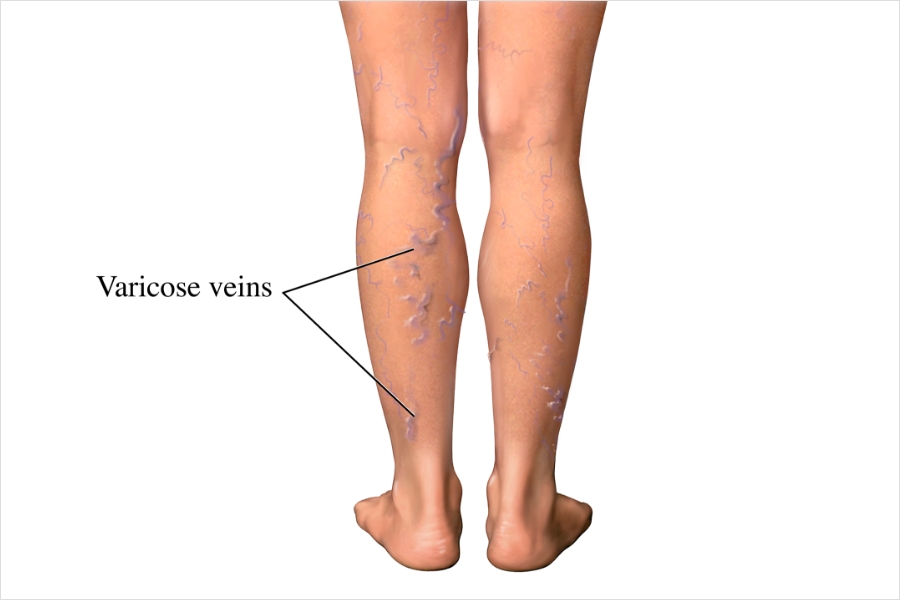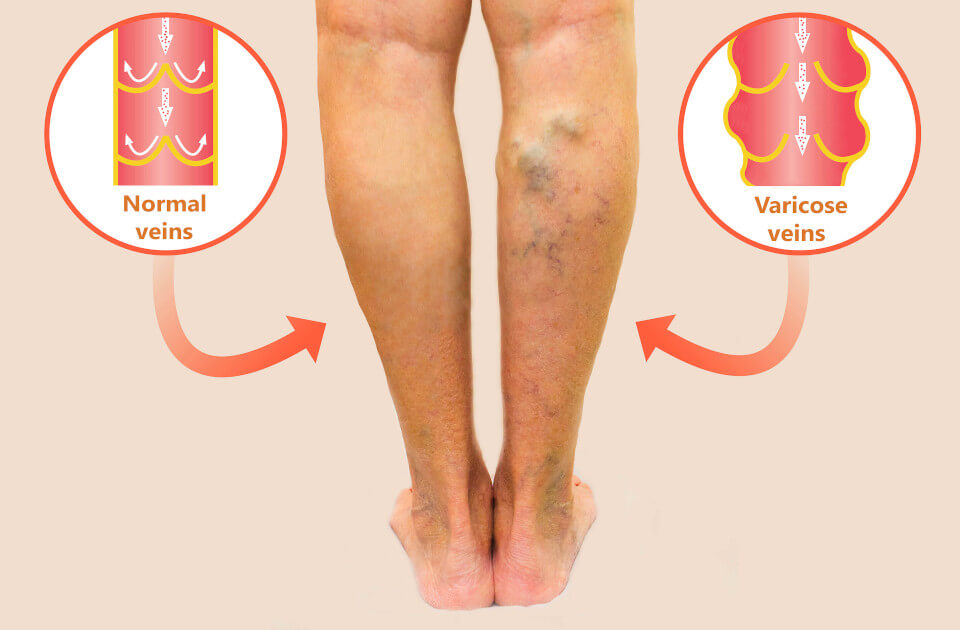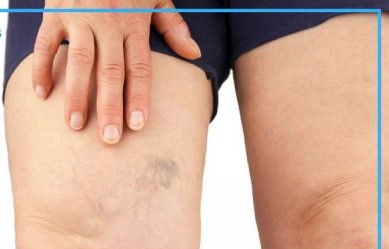Varicose Veins in the Thigh: Symptoms and Early Detection
Varicose veins are enlarged, twisted veins that typically develop in the legs, though they can occur in other parts of the body as well. They result from weakened valves in the veins, leading to poor blood flow and pooling. While varicose veins are often associated with the calves and lower legs, they can also affect the thighs. Varicose veins in the thigh can present unique symptoms and may have different causes and risk factors compared to varicose veins in the lower legs.
Understanding the early symptoms of varicose veins in the thigh is crucial for timely intervention and prevention of complications. Left untreated, varicose veins in this region can lead to chronic discomfort, skin changes, and even more serious conditions like blood clots or venous ulcers.

Causes of Varicose Veins in the Thigh
Varicose veins in the thigh are caused by the same underlying issues as varicose veins in other areas: valve failure in the veins. Veins are responsible for carrying blood from the legs back to the heart. To prevent the backflow of blood, veins have one-way valves. When these valves become weak or damaged, blood begins to pool in the veins, causing them to enlarge and become varicose.
Several factors can increase the likelihood of developing varicose veins in the thighs:
- Prolonged Standing or Sitting: Jobs that require long periods of standing or sitting, such as teaching or desk work, can increase pressure on the veins in the legs and thighs, leading to varicose veins.
- Pregnancy: The increased blood volume and pressure on the veins during pregnancy can contribute to varicose veins, including in the thighs.
- Obesity: Excess weight puts added pressure on the veins in the lower body, increasing the risk of developing varicose veins in the thighs.
- Age: As people age, the veins and their valves naturally weaken, leading to a higher risk of varicose veins.
- Genetics: A family history of varicose veins increases the likelihood of developing the condition.
Symptoms of Varicose Veins in the Thigh
The symptoms of varicose veins in the thigh can vary from mild to severe, depending on the extent of the condition. In the early stages, symptoms may be subtle and easy to overlook. However, as the condition progresses, the symptoms become more pronounced and can significantly impact quality of life.
Visible Veins in the Thigh
One of the most noticeable early signs of varicose veins in the thigh is the appearance of enlarged, twisted veins just beneath the skin. These veins are usually blue, purple, or red and can be bulging or raised. While they may initially be small and confined to one area, they can spread and become more prominent over time. In the thighs, varicose veins are often more visible when standing or sitting for prolonged periods. They may also become more pronounced after physical activity or during warmer weather due to increased blood flow to the area.

- Heaviness and Fatigue in the Thigh
A common early symptom of varicose veins in the thigh is a sensation of heaviness or fatigue in the affected area. This is often more noticeable at the end of the day, after standing or sitting for long periods. The pooling of blood in the veins leads to increased pressure, making the thigh feel heavy and tired. This symptom may also be accompanied by a dull ache or throbbing sensation. The heaviness and fatigue can make it difficult to engage in physical activities or even perform simple tasks, such as walking or standing for extended periods. - Swelling in the Thigh
Swelling, or edema, is another common symptom of varicose veins in the thigh. As blood pools in the veins, it can cause fluid to leak into the surrounding tissues, leading to swelling. This swelling is usually mild in the early stages but can become more pronounced as the condition progresses. Swelling in the thigh may be accompanied by tightness or discomfort, and it may be more noticeable after long periods of standing or sitting. In some cases, the swelling may extend to the knee or lower leg. - Pain or Discomfort in the Thigh
Pain is a frequent symptom of varicose veins in the thigh, particularly as the condition progresses. The pain may be described as aching, throbbing, or cramping and is often worse after prolonged standing or sitting. The discomfort is caused by the increased pressure in the veins, which irritates the surrounding tissues and nerves. Some individuals may experience sharp, localized pain in the area of the varicose veins, while others may feel a more generalized ache throughout the thigh. The pain may be more intense at the end of the day or after physical activity. - Itching or Burning Sensation
An itching or burning sensation around the varicose veins is another common symptom, particularly in the thigh area. This itching is caused by the buildup of blood in the veins, which leads to inflammation and irritation of the surrounding skin. The skin in the affected area may become dry, flaky, and irritated, leading to itching or a burning sensation. While this may seem like a minor inconvenience, it can be an early indicator of varicose veins and should not be ignored. - Skin Changes
As varicose veins in the thigh worsen, the skin around the affected area may begin to change. The skin may become discolored, turning brownish or bluish, and it may appear thin or shiny. These changes are caused by the breakdown of red blood cells and the leakage of blood into the surrounding tissues. In more advanced cases, the skin may develop a leathery texture or become thickened and hardened. This condition, known as lipodermatosclerosis, can make the skin more prone to injury and slow the healing of cuts or scrapes. - Muscle Cramps
Muscle cramps, especially at night, are a common symptom of varicose veins in the thigh. These cramps are caused by poor circulation and reduced oxygen supply to the muscles. The lack of oxygen can lead to muscle fatigue and cramping, particularly after periods of inactivity. These cramps can disrupt sleep and cause discomfort, particularly in the later stages of the condition. - Restless Legs
Restless legs syndrome (RLS) is a condition often associated with varicose veins, including those in the thigh. Individuals with RLS experience an uncontrollable urge to move their legs, especially when resting or lying down. This condition can make it difficult to sleep or relax and may be linked to poor blood flow in the veins.

Complications of Untreated Varicose Veins in the Thigh
If left untreated, varicose veins in the thigh can lead to more severe complications:
- Venous Ulcers: These open sores usually develop near varicose veins and are slow to heal.
- Blood Clots: Deep vein thrombosis (DVT), a serious condition, can occur if blood clots form in the deep veins of the thigh.
- Chronic Venous Insufficiency: This long-term condition results from poor blood flow in the veins and can lead to swelling, pain, and skin changes.
Conclusion
Early detection of varicose veins in the thigh is essential for preventing complications. Symptoms such as visible veins, leg heaviness, swelling, pain, itching, and skin changes should not be ignored. Prompt treatment can alleviate discomfort and improve overall quality of life.



